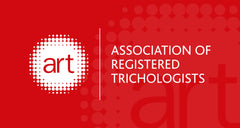Should I Relax My Child's Hair?

As your daughter progresses in age, naturally her hair continues to grow longer and thicker until it becomes a beautiful mane of thick curly and coiled hair. Afro hair is stunning in its natural form, especially as it gathers length, the downside is the time it takes to maintain and style. For working mom’s, finding half an hour each day to style your daughter’s hair can be challenging. The temptation to succumb relaxing it for manageability and convenience becomes increasingly tempting. Relaxing your daughter’s hair can be an enticing prospect, saving you time and potentially empowering your daughter to self-style. Despite there being a plethora of benefits derived from relaxed hair, the side effects can be distressing, causing guilt and even remorse.
Afro Hair in it’s Infancy – Transition and Transformation
Children with afro hair experience a gradual transformation in textured up to the age of 2. This is because babies are born with vellus hair – which is soft, thin, fine hair, similar to body hair. Babies typically have vellus hair between 0 – 3 months, after this period, their scalp makes the transition to intermediate hair in preparation for terminal hair. The transition to terminal hair usually takes place from the age of two onwards. Terminal hair is coarser, stronger and resilient. Because a child with afro hair goes through transitional and transformational textures, it is not advisable to add chemicals to their hair prior to the age of 3. The chemicals which are in relaxers have a disruptive and damaging effect on your child’s hair growth cycle at a time when their hair follicles are most vulnerable, causing hair loss and adverse scalp conditions.
How Do Relaxers Work and How Will It Affect My Child’s Hair?
Before you make the decision to relax your daughter’s hair, it is important to know how relaxers work. The purpose of a relaxer is to change the shape of curly afro hair to straight. Changing the shape of hair requires chemicals with a high alkaline content which will break down the bonds which hold clusters of protein cells together (hair).

Hair is composed of a collection of protein cells. Protein cells are held together in a glue-like fashion by three types of bonds of varying strength which serve different purposes to facilitate hair functionality. Disulfide bonds strengthen your hair, providing elasticity and shape, the strongest of the three bonds, they are broken by product with high alkaline content. Hydrogen bonds also provide hair with elasticity and strength, although they are not as strong as disulfide bonds, they can be broken when water is applied to hair. Salt/Ionic bonds are the weakest of all hair bonds and therefore easily broken by acidic or alkaline products.
The process of relaxing hair involves breaking down or weakening the strongest hair bonds (disulfide) with an alkaline based chemical to enable hair shape to change from curly to straight. When hair bonds, which are responsible for holding hair together and maintaining its strength are broken or weakened, in turn hair becomes weak, damaged and more likely to break and shed. Click here for more information on how relaxers work. A child’s hair is in its infancy of development, as explained earlier, and therefore more vulnerable to damage and breakage when a chemical is applied to change its natural composition.
The initial results of using relaxers are generally quite impressive, as hair typically looks shiny, full bodied and healthy after the first application. However, as hair grows, ‘touch ups’ are required and performed on the roots every 6 – 12 weeks. The repetitive process of weakening hair bonds makes hair thin and limp over time and more vulnerable to intense shedding and breakage which will be heart breaking for yourself and your daughter.
Alternatives to Relaxing Your Child’s Hair
There is a tendency to regret relaxing your child’s hair when they are young, especially if it results in hair thinning, hair loss or adverse scalp conditions. However, parents rarely regret leaving their child’s hair natural, to grow into beautiful thick cascading locks which turn heads wherever they go.
Cornrows
If you are tight on time, cornrows can be a convenient, low maintenance way to style your child’s hair, provided they are not done too tightly to trigger hair conditions such as traction alopecia, click here for more information. Cornrows can last up to 2 weeks and can be as stylish and creative as your imagination allows.
Blow Dry
Blow drying your child’s hair straight on low heat with protective products can straighten and lighten afro hair without inflicting permanent damage. Hair can become lighter and manageable for a couple of days.
We hope this blog provided you with some insight into the implications of using a relaxer but ultimately, whether you decide to relax your child’s hair or leave it natural is your decision.
Treatment for Relaxed Hair Which is Breaking or Shedding Excessively
If your hair is breaking or shedding excessively you might require treatment to prevent further damage to your hair and restore hair growth. ProTress Essential Scalp Therapy Energising Shampoo and Lotion provides treatment that can halt the progression of hair loss and breakage, improving hair growth whilst strengthening weak and damaged hair. Our unique formula contains the patented Si MATRIX PF which will rebalance and reactivate the scalp and improve micro circulation to stimulate hair growth. ProTress is enriched with natural extracts of Rosemary, Nettle and Passion Flower. Rosemary, Nettle and Passion Flower have a cleansing effect on the scalp, preventing hair loss whilst encouraging hair growth, making hair thicker and stronger.
ProTress works best if not used on the day hair is relaxed, but at the following hair wash cycle.


